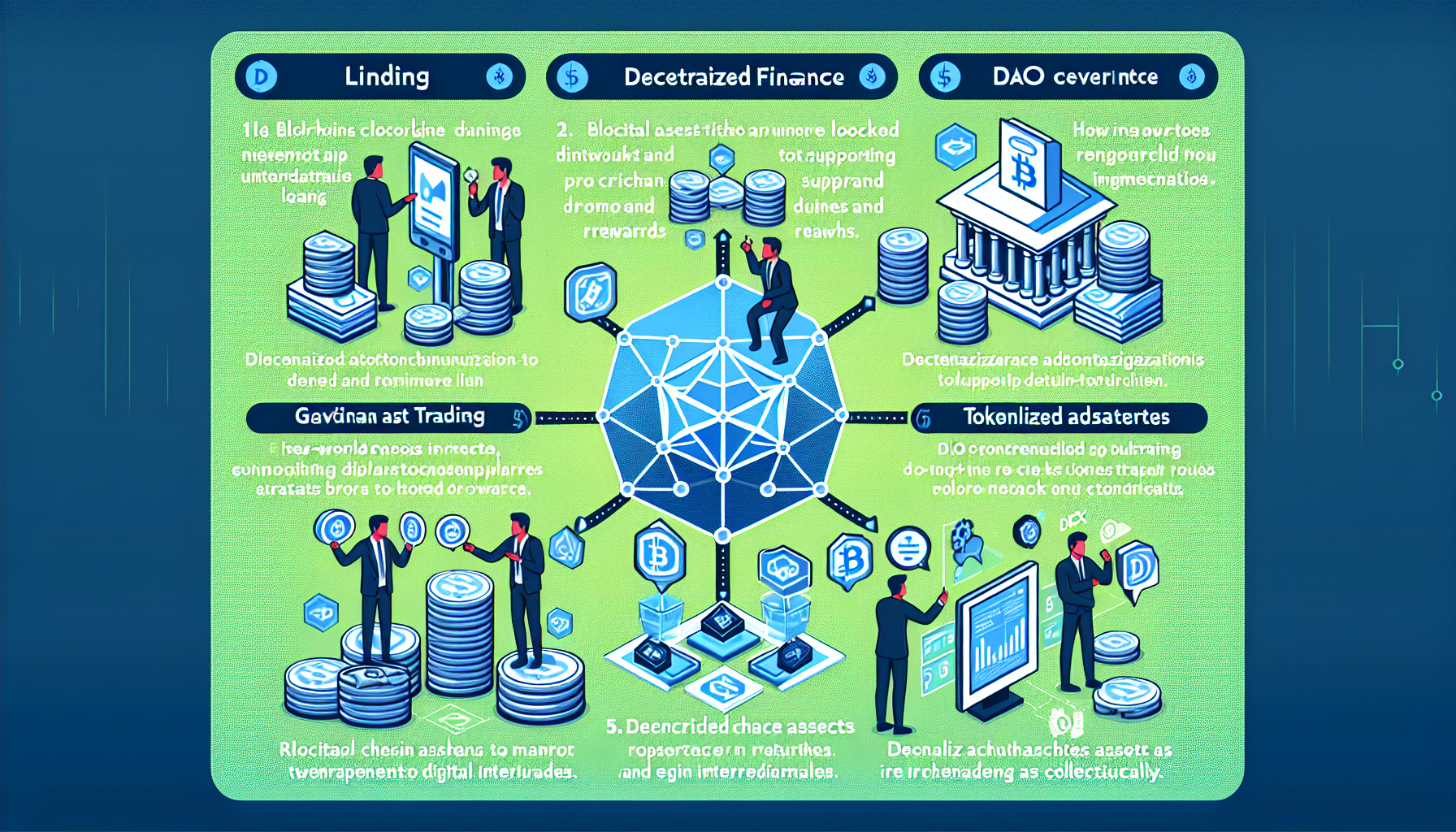
Decentralized Finance (DeFi) has evolved from a niche experiment into a multi-billion-dollar ecosystem that continues to reshape the global financial landscape. As we step into 2025, DeFi is no longer just about yield farming or decentralized exchanges—it’s about the reinvention of banking, investing, insurance, and identity through code.
But with great potential comes significant risk. In this article, we explore the current state of DeFi in 2025, uncover the emerging opportunities, analyze the key risks, and predict what’s next in this rapidly evolving space.
DeFi in 2025: Where Are We Now?
In 2025, the DeFi sector holds over $150 billion in Total Value Locked (TVL) across protocols. Major players like Aave, Uniswap, MakerDAO, and Curve continue to dominate, but dozens of new protocols have emerged offering niche solutions in lending, derivatives, stablecoins, and decentralized identity.
Key developments shaping the current landscape:
- Layer 2 Scaling (Arbitrum, Optimism, zkSync) has drastically reduced fees.
- Cross-chain interoperability allows seamless asset transfers between blockchains.
- Regulatory frameworks are clearer in regions like the EU, Singapore, and the UAE.
- Institutional involvement has grown, with major banks experimenting with DeFi protocols for yield strategies and tokenized assets.
Opportunities in DeFi Right Now
DeFi offers massive potential for investors, developers, and everyday users. Here’s where the most exciting opportunities lie in 2025:
1. Real-World Asset (RWA) Tokenization
Protocols like Centrifuge and Goldfinch tokenize assets such as real estate, invoices, and art, allowing investors to earn yield from off-chain economic activity. This is bringing liquidity to traditionally illiquid markets.
2. Decentralized Identity (DID) and Credit Scoring
New identity frameworks are enabling undercollateralized lending and reputation-based finance. No longer do users need to over-collateralize loans with 150%+ of their assets—thanks to on-chain credit scores.
3. Automated Portfolio Management (DeFi ETFs)
Platforms now offer smart-contract-based index funds that adjust exposure automatically. It’s the DeFi version of robo-advisors, minus the central custody.
4. Insurance Protocols
With growing risk, decentralized insurance providers like Nexus Mutual and InsurAce are filling the gap by offering protection for smart contract failures, oracle attacks, and wallet hacks.
5. Sustainable Yield
Protocols are moving away from unsustainable incentives and toward real yield models—revenue shared from actual protocol usage, not just token emissions.

Major Risks in the DeFi Landscape
DeFi’s rapid innovation comes with serious risks, especially in a still-maturing regulatory and technological environment:
1. Smart Contract Exploits
Despite audits, vulnerabilities remain common. Hacks in 2024 alone resulted in over $2 billion in losses. Bugs, flash loan attacks, and logic errors still plague the ecosystem.
2. Regulatory Uncertainty
While some regions are adopting DeFi-friendly rules, others—like the U.S.—still enforce unclear or inconsistent regulation, which could impact protocol development and accessibility.
3. Centralization Risks
Ironically, many “decentralized” protocols rely on centralized teams, multisig wallets, or governance token whales, creating potential points of failure or manipulation.
4. Liquidity Fragmentation
The proliferation of blockchains and protocols can scatter liquidity, making trading more complex and increasing slippage or impermanent loss for users.
5. User Error
DeFi still requires technical understanding. A single mistake—wrong address, phishing link, lost keys—can result in irreversible loss of funds.
What’s Next for DeFi in 2025 and Beyond?
The next wave of DeFi is less about innovation for innovation’s sake, and more about scalability, integration, and usability. Here are five trends to watch:
1. DeFi x TradFi Integration
Expect to see more bridges between decentralized and traditional finance. Banks will offer DeFi-powered yield accounts. Tokenized bonds, equities, and real estate will be tradable on-chain with regulatory approval.
2. AI in DeFi
Artificial Intelligence is already being used to optimize trading strategies, manage risks, and detect anomalies. Expect on-chain AI agents managing entire investment portfolios.
3. Compliant DeFi (“RegFi”)
Protocols will embed KYC, AML, and jurisdictional controls natively through zero-knowledge proofs or identity tokens, making DeFi safer for institutions without compromising user privacy.
4. Decentralized Autonomous Organizations (DAOs) 2.0
Governance will become more transparent, secure, and participatory. New DAO tooling allows non-technical users to engage in decision-making without navigating complex interfaces.
5. Mobile-First DeFi
User experience will be radically improved, with mobile-first wallets and apps that allow frictionless DeFi access for millions of users, especially in developing countries.
Conclusion: DeFi Is Growing Up
DeFi in 2025 is no longer a Wild West—it’s becoming a structured, scalable, and increasingly integrated part of global finance. The protocols are maturing, the risks are being addressed, and the opportunities for innovation are just beginning.
Whether you’re an investor, developer, or curious observer, now is the time to understand and engage with the future of finance. Just like the early days of the internet, those who explore and build now will shape what’s next.




